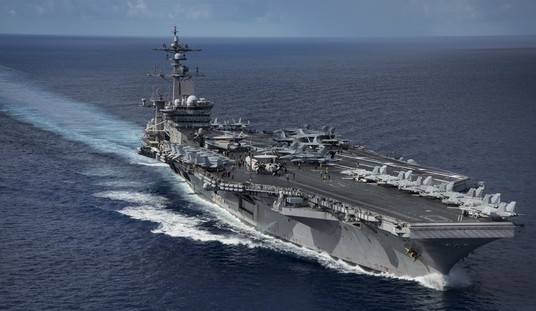A couple of days ago, Kim Jong Un threatened the US territory of Guam with a nuclear attack. He was either happy or unhappy with the response because now his regime has doubled down. They have promised that they will launch four missiles at targets in the ocean around Guam as a show of force:
North Korea has announced a detailed plan to launch a salvo of ballistic missiles toward the U.S. Pacific territory of Guam, a major military hub and home to U.S. bombers. If carried out, it would be the North’s most provocative missile launch to date.
The announcement Thursday warned that the North is finalizing a plan to fire four of its Hwasong-12 missiles over Japan and into waters around the tiny island, which hosts 7,000 U.S. military personnel on two main bases and has a population of 160,000.
Japan and South Korea vowed a strong reaction if the North were to go through with the plan.
It said the plan, which involves the missiles hitting waters 30 to 40 kilometers (19 to 25 miles) from the island, could be sent to leader Kim Jong Un for approval within a week or so. It would be up to Kim whether the move is actually carried out.
It is unclear whether — or exactly why — North Korea would risk firing missiles so close to U.S. territory. Such a launch would almost compel the United States to attempt an intercept and possibly generate further escalation.
According to South Korea’s Yonhap news agency, this is where the missiles would splash:
If N.Korea fires 4 missiles towards Guam as it threatened today, this would be their potential trajectory & landing spots (from yonhap news) pic.twitter.com/dwAtbY3ldG
— Hawon Jung (@allyjung) August 10, 2017
By launching a salvo of four, the North would be attempting to make it harder for the U.S. to intercept all of the incoming missiles. Its stated flight path over Japan is also very aggressive — it has recently tried to avoid flying over neighboring countries by shooting its missiles up at a very high angle to land in the ocean.
If you want a trigger for war, you’re looking at it. Not only will the missiles fly over Japan, if the map provided by Yonhap is accurate, two of them will fly over Guam while on final trajectory. Keep in mind, from what we’ve documented of North Korean missiles thus far, it would not be improbable for one of them to break up and land on Guam (keep in mind that the SCUD that killed/wounded 126 soldiers had been broken up by a Patriot missile). Plus the circular error probable (CEP), this is the circle around the desired point of impact where 50% of all projectiles would land, is probably 20+ kilometers. If the map is accurate, Guam could be hit by any of the four missiles without North Korea intending to do so.
The real question is whether this is real, that is, is it an attempt to probe our missile defenses, or is it trash-talk?
To a certain extent, it really doesn’t matter. If North Korea does volley four missiles toward Guam, the national command authority would have about 18 or so minutes to decide a) is this a real attack under the guise of a test or only a test? And b) if it is determined to be a test, do we engage the missiles and show the effectiveness of the system or not engage and possibly give the impression of weakness? Assuming that it is a test, then there is a decision that must be made as to what to do next.
As I posted a couple of days ago, the path to war frequently acquires its own logic. With no trust at all existing between the United States and North Korea, a launch towards Guam could easily be construed as an inbound nuclear attack. Engaging the missiles with THAAD and Patriot could easily be considered a hostile act by North Korea. It is hard to see how this all ends without shooting.














Join the conversation as a VIP Member